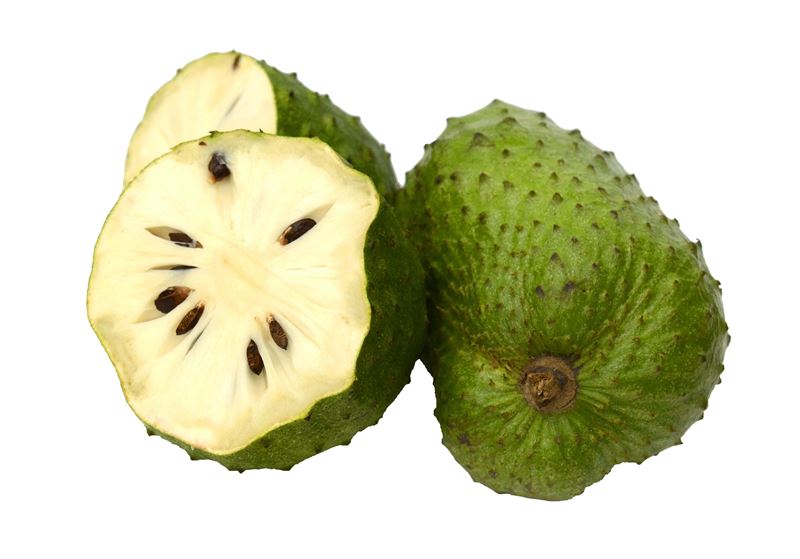
Wellness: Superfoods – Guanabana
If you have experienced Costa Rica enough, you have probably come across our beloved guanabana fruit. Maybe you had a guanabana fresco at a soda, or you enjoyed a refreshing guanabana ice cream at a local shop and were surprised by its peculiar yet delicious flavor. It is so good it is hard to describe! The guanabana comes from the flowering, evergreen graviola tree (scientific name: Annona muricata), which is native to Mexico, Cuba, Central America, the Caribbean and northern South America.
Also called graviola or soursop, this fruit is green, large and spiny with a sweet white flesh and is definitely a very big part of Costa Rican culinary culture. Beyond its usefulness as a food, however, soursop also contains natural compounds with medicinal properties, making it potentially beneficial for your health.
In fact, guanabana is world-known to be a powerful, natural anti-cancer treatment and is abundant in vitamins C and B. Practitioners of herbal medicine recommend the fruit and leaves of the guanabana tree to relieve stomach distress, fever, pain and respiratory problems such as cough and asthma. The guanabana fruit contains some fatty compounds called acetogenins, which have caught the interest of the scientific community for their potential to prevent and slow the growth of cancer. These compounds are found all over the plant, but they are mostly concentrated in the leaves. Some of these compounds have also been found to have anti-parasitic, anti-viral and anti-inflammatory properties.
There have been a few formal studies done on the medical applications of guanabana, with outstanding results. In one of these studies, an extract of this fruit inhibited the growth of the herpes virus in the laboratory, while in another study compounds from soursop were tested on breast cancer cells in culture and found to be up to 250 times more effective in killing the cells than some chemotherapy drugs.
It is important to note as well, that researchers who have explored the properties of guanabana found out that its anti-cancer compounds only react to cancerous cells, and not healthy cells. Why? Because cancer cells have a consistently higher level of cellular activity, which allows them to be better recognized and targeted by the acetogenin molecules.
On the other hand, chemotherapy targets BOTH normal (such as stomach and hair cells) and cancerous cells, causing the side effects of nausea, weight loss, hair loss, and overall low quality of life for cancer patients.
With this being said, I hope you enjoy making guanabana a part of your diet. Go ahead and enjoy its delicious taste while taking care of your body, way to kill two birds with one stone!
